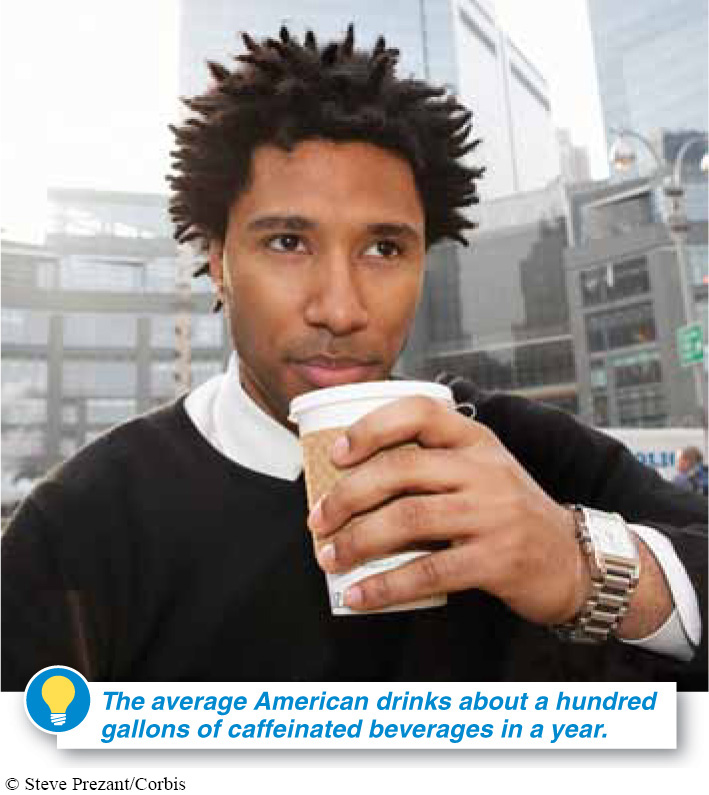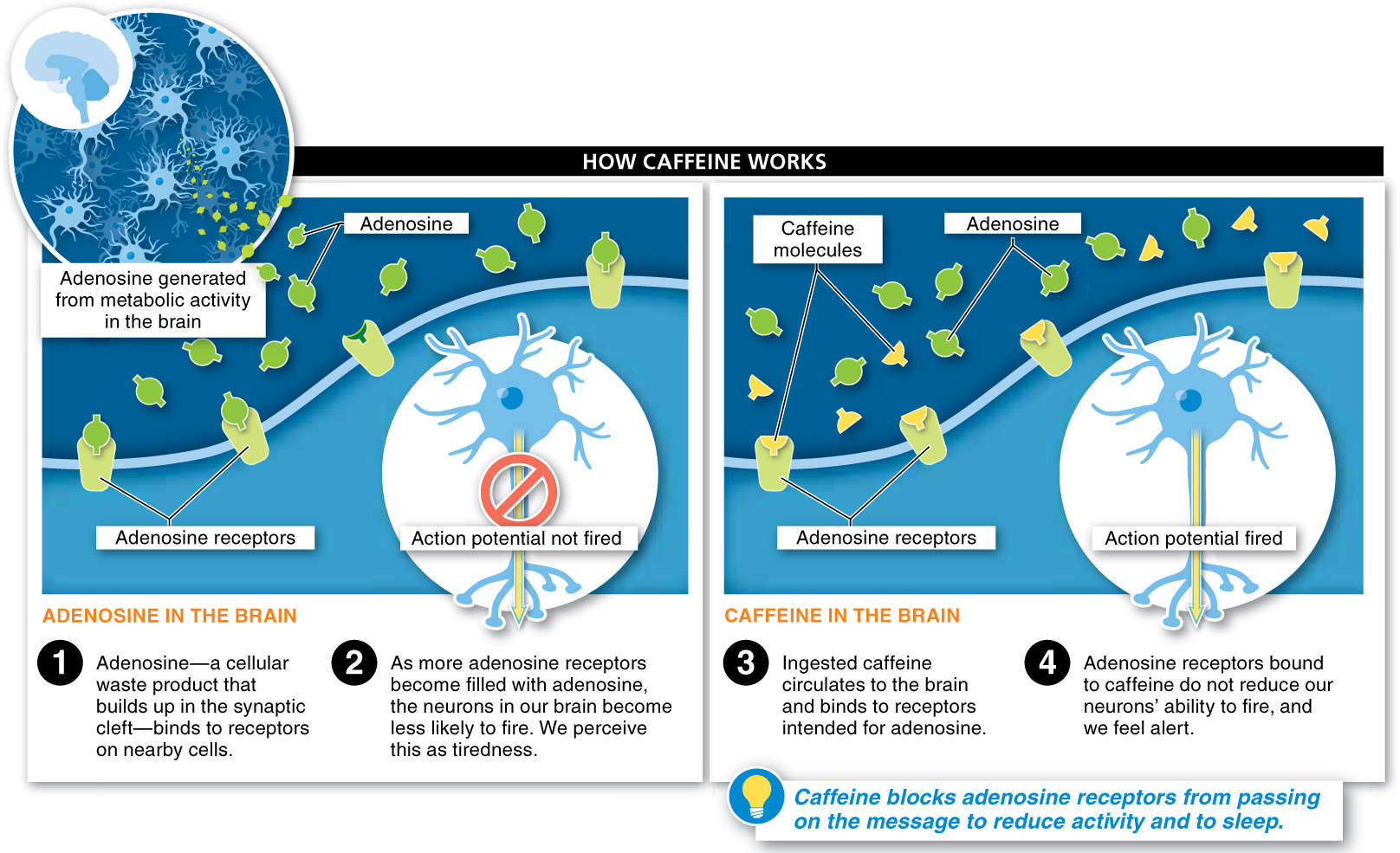23.21: A brain slows down when it needs sleep. Caffeine wakes it up.
Many drugs can interfere with normal neuron functioning, and caffeine is perhaps the most frequently used drug of all that have this effect. Worldwide, more caffeine-
“If it weren’t for coffee, I’d have no discernible
personality at all.”
— DAVID LETTERMAN
The centuries of strong praise are well founded. Caffeine has powerful effects on nearly every animal species. For instance, all rats can eventually be trained to race through mazes, but some learn quickly while others languish in remedial maze-

How does caffeine work its magic? As long as we are awake, our brain is working hard and consuming about 20% of the energy we take in. Much as a running motor generates exhaust fumes, however, all of this neural activity leads to a buildup of cellular waste products. Neuron “exhaust” takes the form of a variety of molecules, including one called adenosine. As a cell releases adenosine, it fills adenosine receptors on nearby cells, particularly those in the brainstem. When a molecule of adenosine binds to an adenosine receptor, this reduces a neuron’s likelihood of initiating an action potential. Adenosine has been described as putting a brake on neuron activity. Consequently, as the production of adenosine continues throughout our day, more and more receptors on more and more neurons are filled, and the neurons in our brain become less likely to fire, regardless of how strongly they are stimulated. We perceive this as tiredness. Then, as we sleep, the cellular waste products such as adenosine are reabsorbed and recycled. Upon awaking, we feel better because we are, literally, more clear-
Caffeine has its effect by blocking the message to reduce activity and to sleep. Here’s how it accomplishes this effect. The caffeine we ingest quickly circulates to our brain, and once there, it diffuses around the cells. Because the shape of the caffeine molecule is similar to that of the adenosine molecule, the caffeine slips into some of the receptors intended for adenosine (FIGURE 23-50). It doesn’t have the same effect as adenosine, however. Adenosine receptors with bound caffeine molecules do not reduce a neuron’s propensity to respond to other stimuli with an action potential. Thus, when many of the adenosine receptors are blocked by caffeine, the adenosine is unable to pass on the message that we need to sleep. Instead, we feel surprisingly alert, as caffeine interrupts one of the normal sleep-

960
Surprisingly, caffeine seems to be safe for most people. Despite considerable searching for ill effects, there is no clear evidence that moderate consumption of caffeine increases our risk of anything beyond the occasional jitters. For healthy people, there appears to be no increased risk of heart, lung, or kidney disease or even cancer.
TAKE-HOME MESSAGE 23.21
Normal neural activity leads to a buildup of cellular waste products. One of these, adenosine, fills adenosine receptors on nearby neurons, reducing the likelihood that a neuron will initiate an action potential and causing fatigue. Caffeine binds to adenosine receptors, but without reducing their likelihood of firing, thus blocking the fatigue-
Aside from water, what are the three most commonly consumed beverages worldwide, and what do they have in common?